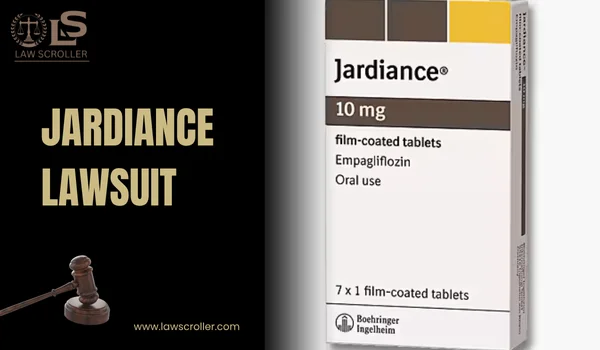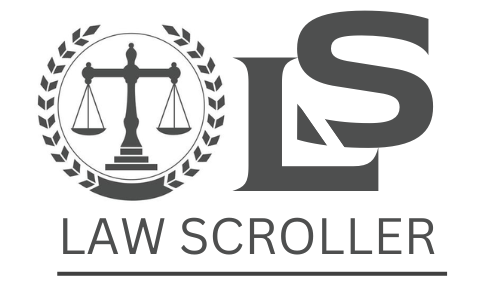If you or someone you know took Jardiance (a diabetes drug) and later experienced serious side effects, you may have heard about a “Jardiance lawsuit” or “Jardiance settlement.” These terms pop up in news stories, law firm ads, and online forums. But what do they really mean — and could you be affected? This article breaks down the facts clearly, steps you should watch for, and what to expect next.
What is Jardiance?
Jardiance (generic name: empagliflozin) is a prescription medication used primarily to treat type 2 diabetes. It belongs to a class of drugs called SGLT2 inhibitors. These drugs help lower blood sugar by forcing the kidneys to excrete extra glucose through urine.
Why is there a lawsuit?

Over time, reports emerged of serious health problems in people using Jardiance and other SGLT2 inhibitors. Some of the alleged side effects include:
- Diabetic ketoacidosis (DKA) — a dangerous buildup of acids in the blood.
- Kidney injury or failure
- Heart attacks, strokes, other cardiovascular risks
- Fournier’s gangrene — a rare but severe infection in the genital/perineal area, sometimes called a “flesh-eating disease”
- Amputations of legs or feet (less certain, but allege risk)
Lawsuits argue that the drug manufacturers (primarily Boehringer Ingelheim and co-marketers) knew (or should have known) about these risks and failed to adequately warn patients and doctors.
Importantly: unlike some mass class-action lawsuits that end in big public settlement announcements, the Jardiance litigation is less settled and more fragmented. Many law firms are no longer accepting new Jardiance claims because deadlines or case activity has slowed.
Who’s Affected
You may want to explore a Jardiance claim if the following apply:
- You took Jardiance (empagliflozin) at any time (often starting from its U.S. approval in 2014 onward).
- After or while using it, you experienced one or more of the serious side effects listed above (DKA, kidney injury, Fournier’s, heart problems, amputations) without other clear cause.
- You have medical records or doctor’s documentation linking the injury (or hospitalization) to your use of Jardiance.
- You file your claim before your state’s statute of limitations (the legal deadline). Many firms state they are no longer accepting new Jardiance cases, which may mean deadlines have passed in many jurisdictions.
Even if a firm says they are not taking new cases, it’s still worth checking with a qualified attorney in your state to see if there is any residual ability to file
Simple Timeline
Here’s a timeline to help you understand how the Jardiance litigation has developed:
| Year | Event |
| 2014 | Jardiance is approved by the U.S. FDA for treatment of type 2 diabetes. |
| 2015 (May) | FDA issues a safety communication warning that SGLT2 inhibitors (including Jardiance) may increase the risk of diabetic ketoacidosis. |
| 2018 (Aug) | FDA warns that SGLT2 inhibitors (including Jardiance and Farxiga) have been linked to Fournier’s gangrene. |
| Late 2010s–2020s | Legal claims begin to be filed by patients claiming they were injured and that warnings were inadequate. |
| By early 2020s | Many law firms announce they are no longer accepting new Jardiance cases. |
| Present | There is no major public “Jardiance settlement” widely reported. Some litigation is ongoing or dormant. |
Because the timeline shows that new case intake is limited and many deadlines may have passed, it’s essential to act quickly if you believe you have a valid claim.
What’s at Stake
If a Jardiance lawsuit is successful (or if a settlement is reached), what could you—or others—gain?
Compensation (damages):
- Medical bills, hospital stays, surgeries, rehabilitation
- Lost wages or reduced earning capacity
- Pain and suffering, emotional distress
- Disability or disfigurement
Accountability & warnings:
- A verdict or settlement could push manufacturers to update warnings, labels, or monitoring practices
- It can bring public awareness to risks so future patients are better informed
Risks & challenges:
- Not all claims win; proving causation (that Jardiance caused your injury) can be complex
- Some cases are too late to file (statute of limitations)
- If your case is filed in a jurisdiction where the law is less favorable, recovery may be limited
At present, there is no known, broadly publicized “Jardiance settlement” that applies nationwide. Most activity is in private lawsuits.
What to Watch Next (Case Update Outlook)
If you’re following a Jardiance case or exploring your options, here’s what to keep an eye on:
- Court filings & case consolidation: In some drug-injury suits, multiple cases are grouped into a multidistrict litigation (MDL) to streamline discovery and hearings. Watch whether Jardiance claims are ever consolidated.
- Settlements vs trial verdicts: Some cases may settle privately; others may go to trial. Settlement offers tend to come later in the process.
- Regulatory developments: If the FDA or other agencies issue new safety warnings or require label changes, that can strengthen claims.
- Attorney announcements: Law firms may reopen or revise their view on Jardiance cases as new evidence emerges.
- State-by-state rulings: Some state appellate courts may issue precedent-setting decisions in toxin or drug-liability law that affect what can be claimed.
If you think you may have a claim, talk to a pharmaceutical/injury attorney in your state about any ongoing case update and whether your rights still exist.
FAQ — Frequently Asked Questions
Q1: What is the “Jardiance lawsuit settlement”?
A: There is no single, universal settlement publicly known that covers all Jardiance users. Some plaintiffs may secure individual verdicts or settlements, but there isn’t a widely reported “Jardiance settlement fund” like you might see in other drug cases.
Q2: Who can claim in a Jardiance lawsuit?
A: Generally, people who took Jardiance and then suffered serious, documented injuries (such as DKA, kidney failure, Fournier’s gangrene, heart injury) may be eligible. But the claim must be filed before your state’s legal deadline (statute of limitations), and many firms now say they are not accepting new cases.
Q3: What kinds of injuries are linked to Jardiance lawsuits?
A: The claims typically involve severe conditions such as diabetic ketoacidosis (DKA), kidney injury/failure, heart attacks or strokes, rare infections like Fournier’s gangrene, and in some cases amputations of lower extremities.
Q4: Is it too late to file a Jardiance lawsuit?
A: Possibly. Many law firms have ceased reviewing new Jardiance claims, and in many states, the statute of limitations may have expired. But it depends on your state, injury date, and whether any exceptions apply. It’s best to talk to a lawyer promptly.
Q5: How long does a Jardiance case take?
A: It varies. A case could take months to several years — especially if it goes through discovery, motions, or trial. Settlements may speed the process, but there are no guarantees.
Q6: Do I need a lawyer to file a Jardiance claim?
A: Yes. These cases involve complex medical evidence and pharmaceutical law. A qualified drug-injury attorney can assess your claim, navigate court rules, and help you understand whether your case is strong enough to pursue.
If you believe you or a loved one may have been harmed by Jardiance, it’s wise to take action swiftly. Even if you hear that many firms have stopped accepting new cases, a trusted lawyer in your state will help you determine whether there is still a path forward based on your specific facts and law.


 Oliver Johnson is LawScroller’s Senior Legal Correspondent specializing in civil litigation, class actions, and consumer lawsuit coverage. He breaks down complex settlements and court decisions into clear, practical guidance for readers.
Oliver Johnson is LawScroller’s Senior Legal Correspondent specializing in civil litigation, class actions, and consumer lawsuit coverage. He breaks down complex settlements and court decisions into clear, practical guidance for readers.